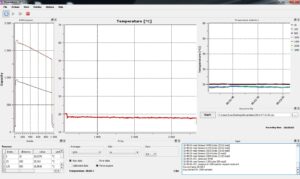 Passive distributed temperature sensing (DTS) helps to improve the measurement of moisture content and temperature increase. The DTS technology has been already tested in China to prove the opportunities provided by this technique. Therefore, distributed temperature sensors are very promising for agriculture.
Passive distributed temperature sensing (DTS) helps to improve the measurement of moisture content and temperature increase. The DTS technology has been already tested in China to prove the opportunities provided by this technique. Therefore, distributed temperature sensors are very promising for agriculture.
Several land conditions include bare soil, plastic mulch, plastic mulch covered with potatoes, and plastic much covered with maize. Land moisture plays a crucial role in influencing grain yield. Nevertheless, distributed temperature sensing is not suitable for the last type of land.
The thing is that several techniques allow for determining soil moisture content. Distributed sensing systems include point, ground, and regional types. Herewith, point fiber optic sensors consist of “oven-drying, neutron scattering, electrical impedance, time-domain reflectometry (TDR), frequency domain reflectometry (FDR), tensiometer, and thermal probe techniques.”
Conventional fiber sensors offer benefits of high precision and reliability but most of them are limited to a specific area. This is the main reason why it is difficult to determine accurately the overall ground moisture condition, especially in places where soil moisture distribution is discontinuous.
Thus, scientists have suggested applying distributed temperature sensing (DTS). DTS technology allows for estimating agricultural soil moisture, herewith, the distance of measurement can achieve several tens of kilometers. The operating principle of distributed temperature sensors is based on the heating of optical cables. When the temperature increases, the soil moisture can be estimated.
The DTS technology is not new and it quickly found the application in moisture measurement. According to this technique, it is possible to measure in situ soil moisture by employing analytical or semi-empirical models. Nevertheless, firstly it is necessary to calculate the thermal conductivity of the soil.
Compared to traditional techniques that have limitations, distributed temperature sensing allows for overcoming them. DTS estimates the temperature response of soil, therefore, measures soil moisture based on the data obtained by fiber optic sensors. Nonetheless, the proposed technique has several disadvantages.
Various weather conditions can influence the heat transfer way in the soil and the data obtained by distributed temperature sensors will be inaccurate. Additionally, boundary conditions and even time change periods also influence the precision. Finally, the standard algorithm is very difficult for application in practice.
Optromix is a DTS system manufacturer that provides top of the line distributed temperature sensing systems suitable for monitoring commerce networks. If you have any questions or would like to buy a DTS system, please contact us at info@optromix.com


 Today all modern industries include highly complex and sensitive operations that require permanent operational conditions that are possible to provide due to the use of advanced technologies for temperature measurement. One of the potential solutions is the use of
Today all modern industries include highly complex and sensitive operations that require permanent operational conditions that are possible to provide due to the use of advanced technologies for temperature measurement. One of the potential solutions is the use of